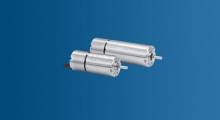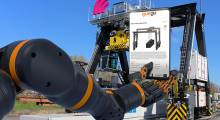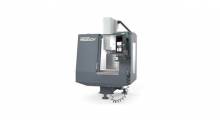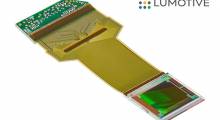“You’re not buying automation, you’re buying confidence in throughput.” Yaro Tenzer, co-founder, RightHand Robotics
A few Modex’s ago, I wrote a column titled It’s All About The Software, a theme I repeated following Promat 2015. It could be that I’m just not that imaginative a guy, or, the proverbial dog stuck on a bone. But at Modex 2020, I was struck once again by just how software is driving our industry today.
It was especially true talking to robotics solutions providers. On the first day of the show, for instance, I stopped by 6 River Systems’ booth to learn about their wall to wall solution. Essentially, the autonomous mobile robotic solution had evolved over the last few years from the comparatively simple task of dispatching a robot from Point A to Point B to something that was much more akin to dynamic slotting on a picking cart, as well as tight integration with put walls. When I noted the changes I was seeing in the industry to Natali Taglic, a marketing events coordinator at 6 River, she said it was all because of the software. She then pointed out that 6 River had about 3 times more software engineers than hardware engineers. The reason: You might get an incremental boost in productivity from improved hardware, but you also have to physically retrofit every robot in the field. Improvements in the software can not only boost productivity, they can be downloaded through the cloud to every robot in the field. You get more bang for your buck.
When I ran that by Yaro Tenzer, co-founder of RightHand Robotics, he showed me the customer-facing dashboard his company is developing. As Tenzer explained, when he talks to a potential customer, the conversation may begin around robots “but from our perspective, it brings the discussion to the throughput of the building.” Now, makers of autonomous mobile robots can do things like optimizing pick paths or deploying swarming strategies to increase throughput. A piece-picking robot, on the other hand, is much like an associate: It is going to pick one item at a time; re-slotting the tote doesn’t really matter; and it can only pick so fast. So, how do you improve on that all important throughput?
The trick to improving performance, Tenzer explained, was to focus on what’s happening at the operational level. Hence, the dashboard, which provides information focused on the time to resolve error codes, identifying miss-picks and highlighting bottlenecks. If you can reduce the time it takes to resolve certain errors, if you understand where your bottlenecks are occurring or if you can correct the reasons a robot consistently miss-picks a certain item, “then you can improve performance,” Tenzer said. That’s software, AI, machine learning and all of those other NextGen technologies the industry is investigating.
Last on the robotics front, I spoke to A.K. Schultz and Mike Howes, the co-founders of SVT Robotics. In their view, one of the challenges the industry is just now coming to grips with is that no one system “has a comprehensive understanding of the flow to optimize the whole distribution center,” Howes said. Instead, every system maximizes for itself, which might ultimately not be the best result for overall throughput. A simple example: A WMS may optimize order fulfillment in a way that is most efficient for the DC but drives up transportation costs. Similarly, a TMS working in isolation can create an optimal transportation plan that drives up costs in the DC. “If a system can see the whole picture, you can make decisions that optimize the entire flow,” Schultz said. “It’s a data problem and its an organizational problem.” It’s another area where software, AI and machine learning will come in to play. “These are correlations that our industry isn’t doing well now, but will come,” Schultz said.
While I’ve focused on robotics so far, this is an area where hardware companies have been focusing for the last few years. “When we started focusing on software, we had three engineers and now we have 65 working on this,” Krish Nathan, the CEO of SDI Industries told me. “It continues to be the key driver of everything we do, and it’s the platform where we can put WMS, robots, automation and lights. That development continues.”
It’s the area that I’ll continue to watch over the coming year.
About the Author
Follow Robotics 24/7 on Linkedin
About the Author
Follow Robotics 24/7 on Linkedin
Article topics
Email Sign Up















